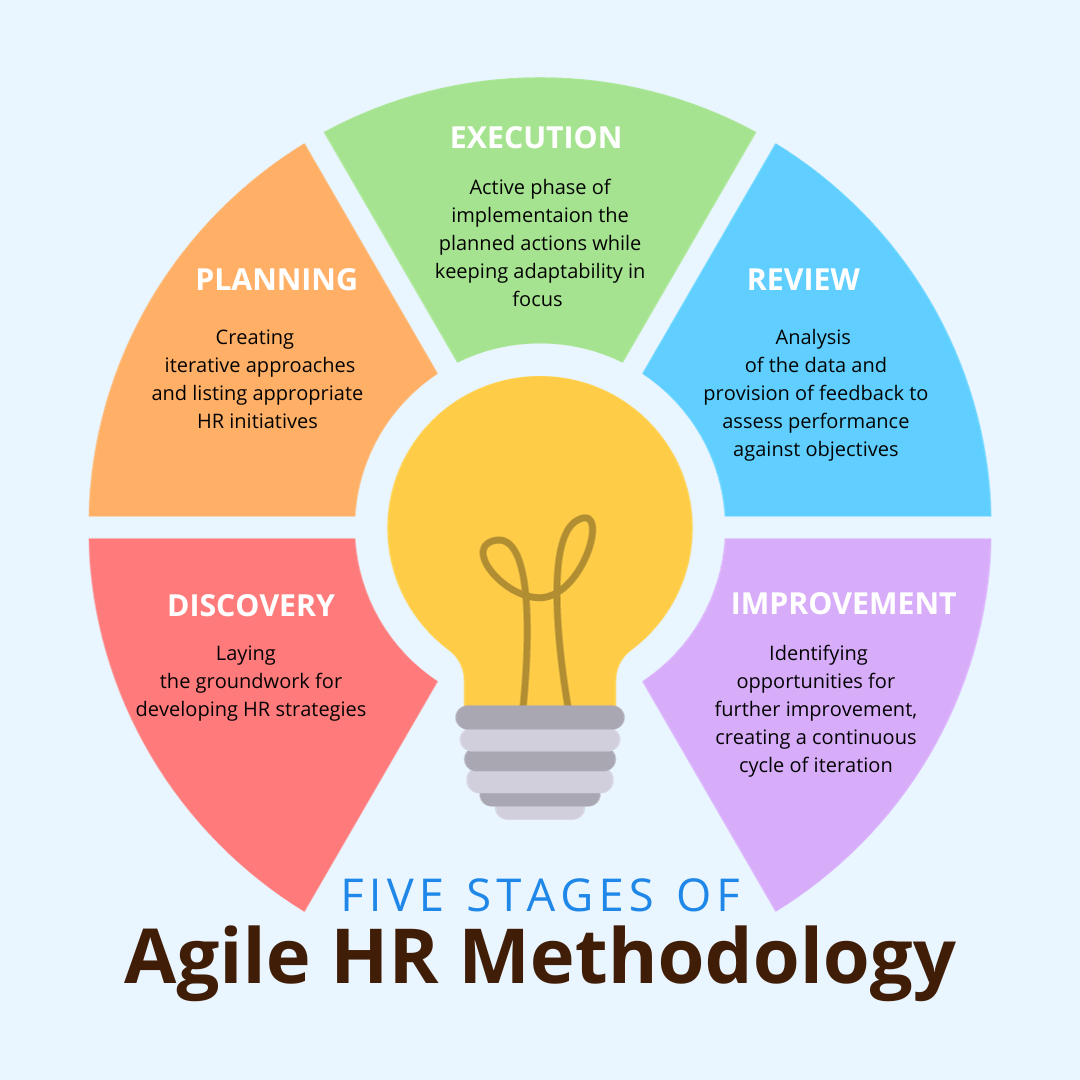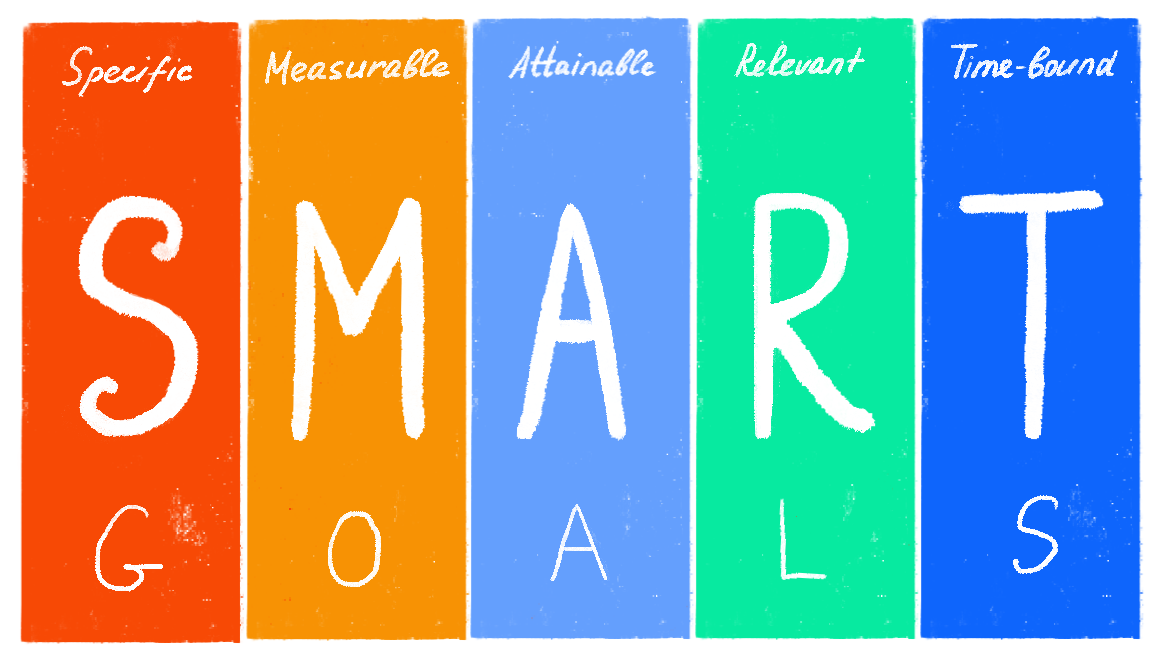10 Ways How to Implement Agile Working for HR
Learn 10 ways to implement Agile working for HR for increased productivity of your business.

Agile working is no longer just for tech teams. It's a powerful approach that can help HR departments become more responsive, adaptable, and efficient.
What Is Agile In HR?

Agile HR is a dynamic and collaborative approach to managing human resources that fosters flexibility, innovation, and constant growth.
Traditional HR methods, driven by fixed goals and long-term planning, aren't capable of effectively dealing with the challenges employers and employees face in the modern workplace.
Though there is no actual battle between Agile and Waterfall approaches, the 'agilezation' is much more pronounced now.
As opposed to the old practices, Agile HR methods, derived from Agile software development methods, champion:
- iterative development
- openness to continuously adjustable targets and actions.
In addition, Agile HR helps:
- cut down hierarchies
- promotes a collaborative work culture.
This is particularly important in multinational settings, where team members and stakeholders could be dispersed across continents and time zones. Agile helps foster better communication and understanding among such distributed members.
Agile HR Methodology in Stages

Agile HR is a methodology applied to human resources processes implies:
- being people-centric
- focusing on continuous improvement
- prioritizing collaboration
- embracing adaptability.
Here's how it works in stages:
Discovery
In the Discovery phase of Agile HR, the team delves deep into understanding the organization’s needs, challenges, and goals.
Through gathering insights and feedback, they lay the groundwork for developing HR strategies that are adaptable and responsive to the organization’s unique circumstances.
Planning
In Agile HR, planning is a dynamic process where HR teams set adaptable goals and create iterative strategies that evolve with project demands.
This approach involves continuous collaboration and feedback loops to align HR initiatives with changing organizational needs.

Execution
This is the stage where planned HR initiatives are put into action, with a strong emphasis on being flexible and responsive to change.
It involves ongoing monitoring and adaptation, ensuring that HR actions stay in line with the evolving context of the organization.
Review
Revisiting the outcomes of the project, Agile HR meticulously analyzes the data and feedback to assess performance against objectives.
This reflective process is a cornerstone of Agile methodology, allowing the HR team to evaluate the efficacy of initiatives and pinpoint areas for refinement.
Improvement & Growth
In this phase, the HR team uses the information gathered from the evaluation phase to improve both the current project and the overall HR methods.
This stage involves actively seeking out opportunities for further improvement, creating a continuous cycle of iteration and progressive development in the project’s execution.
Benefits of Agile Working in HR

Talent Management: Agile HR would mean a more dynamic approach to talent management. Traditional yearly evaluations could be replaced by continuous performance reviews, enabling quicker feedback and personal development.
Recruitment: Agile HR could implement iterative cycles and feedback loops in the recruitment process, making it more responsive and adaptive to the organization’s changing needs.
Employee Well-being: Employee well-being could be tracked in real-time, allowing for quicker interventions and better work-life balance, ultimately improving employee morale and productivity.
Training and Development: HR could employ agile methods to create more adaptive and personalized training programs, responding to the real-time needs of employees and the business.
Decision-making: With a move towards decentralization, many decisions that were previously the sole domain of HR could be made collaboratively, involving multiple stakeholders.
Factuality: Agile HR would likely be more data-driven, employing analytics not just for performance metrics but also for predicting employee behaviors and attrition rates based on facts rather than guesses.
Remote Work: The agile model’s flexibility extends well to remote and hybrid work settings, which are increasingly becoming the norm.
Compliance and Governance: Even though agile emphasizes flexibility, it doesn’t mean a lack of structure. Agile HR would still need to maintain compliance but in a way that’s adaptable to fast-changing laws and regulations.
Employee Engagement: Agile practices can contribute to higher employee engagement by involving employees in decision-making processes and giving them a sense of ownership.
Increased efficiency and cost savings: By streamlining processes and eliminating unnecessary tasks, agile working can lead to significant cost savings and improved operational efficiency within the HR department.
Agile HR Best Practices

Agile methodologies prioritize adaptability and responsiveness through incremental and iterative work cadences.
When integrated into HR, these methodologies have the potential to modernize HR functions, making them more responsive, employee-centric, and data-driven.
Build Employee-Centered Systems
Action: Incorporate feedback mechanisms at every stage of HR processes, ensuring they are tailored to employee needs.
Advantage: Creates an environment where employees feel valued and heard, improving job satisfaction and retention.
Use Iterative Feedback Loops
Action: Implement regular check-ins and feedback sessions rather than annual performance reviews.
Advantage: Allows for real-time performance adjustments, employee growth, and more timely recognition.
Develop Cross-Functional HR Teams
Action: Form diverse HR teams with members from various departments to address specific organizational challenges.
Advantage: Brings a holistic view to problem-solving, ensuring all angles are considered.
Implement Data-Driven Decision Making
Action: Leverage analytics tools to continuously monitor and evaluate HR processes, making adjustments based on data.
Advantage: Decisions are based on evidence, leading to more efficient and effective HR strategies.
Promote Continuous Learning & Development
Action: Develop a culture of continuous learning by providing regular training, workshops, and opportunities for upskilling.
Advantage: Ensures that the workforce remains competitive, adaptable, and ready for future challenges.
Define Roles with Flexibility
Action: Allow roles to be dynamic, changing based on project needs and employee skillsets.
Advantage: Boosts employee engagement, as they can work on projects aligning with their interests and expertise.
Atomize Goal Setting
Action: Shift from long-term goal setting to shorter, more achievable sprints aligned with business objectives.
Advantage: Keeps teams focused and motivated, with a clear line of sight on immediate objectives.
Encourage Transparent Communication
Action: Use platforms and tools that promote open communication across all levels of the organization.
Advantage: Fosters trust, breaks down silos, and keeps everyone informed of organizational changes.
Embrace Change & Adaptability
Action: Encourage an organizational mindset that views change as an opportunity, not a threat.
Advantage: Makes the organization resilient to external shocks and better positioned to seize new opportunities.
Prioritize Employee Wellbeing
Action: Implement wellbeing programs and regularly gather feedback to ensure they meet employee needs.
Advantage: Enhances employee health and productivity, leading to a happier, more engaged workforce.
Incorporating these Agile practices into HR can lead to a more adaptive, efficient, and employee-centric HR department, better positioned to support an organization's evolving needs.
Agile HR Tools

Atlassian Jira for Sprint Planning
Originally designed for agile software development, Jira can also be adapted for HR teams. It allows for creating user stories, planning sprints, and distributing tasks across the team.
It is one of the best tools for sprint planning in HR as it ideally offers features that support task prioritization, collaboration, and breaking down HR tasks into manageable chunks, which can be handled in 2-4 weeks sprints.
Microsoft Teams for Streaming Communication
A part of the Office 365 suite, Teams is robust for video conferencing and instant messaging and integrates deeply with other Microsoft products, which can be beneficial for organizations already in the Microsoft ecosystem.
It encourages a continuous stream of dialogue rather than formal, spaced-out meetings.
BambooHR for Flexible HR Policies
This HR software is well-regarded for its ability to streamline data and processes, allowing for easy access to information and simplifying HR tasks, which can be particularly beneficial for supporting flexible working arrangements.
It helps adapt and revise HR policies that encourage agility and flexibility.
TMetric for Employee-Centric Design
TMetric is a time tracking tool that can be effectively integrated into an Agile HR framework, especially when taking an employee-centric approach. It allows to shift focus onto employees and create processes that prioritize employee needs.
Aside from accurate time tracking, it brings HR an instant result when they are in need of productivity analysis and employee performance evaluation.
TMetric also contributes to performance management agility by aggregating data that make performance evaluation processes quicker, more assertive, and more reflective of agile operations.
Asana for Encouraged Collaboration
Asana is a work management platform that helps teams coordinate and manage their work. HR teams can use it to track the progress of recruitment, onboarding, and employee development initiatives.
It ensures cooperation and active participation across teams.
LinkedIn Learning for Endorsing Continuous Learning
This platform provides a wide array of professional development courses that can be integrated into an HR system for employee learning.
It covers various topics that can be aligned with individual learning paths and organizational goals and promotes a culture of continued professional growth and development.
Agile In HR Examples

The core principles of Agile—such as iterative development, continuous improvement, and cross-functional collaboration—are applied in HR to enhance flexibility, efficiency, and employee satisfaction.
Here are some examples of Agile in HR.
Recruitment and Onboarding
- Agile HR teams may use iterative cycles to improve the hiring process, regularly soliciting feedback from candidates and hiring managers to refine job descriptions, interview questions, and onboarding procedures.
- Cross-functional teams might work together on hiring, involving not just HR but also team members from the department where a new hire will work, ensuring a good fit and a well-rounded evaluation.
Performance Management
- Instead of annual reviews, Agile HR might implement more frequent, less formal check-ins between employees and managers to discuss goals, performance, and development, aligning with the Agile emphasis on regular iteration.
- Goals and objectives could be set in shorter cycles (quarterly or even monthly), allowing for adjustments based on changing company needs or personal development progress.
Learning and Development
- HR departments may use Agile to develop training programs, breaking down learning objectives into smaller, manageable units that can be quickly designed, deployed, and revised based on employee feedback.
- Pairing and sharing sessions can be organized, where employees pair up to learn from each other, promoting a collaborative learning environment.
- Agile methodologies can be applied to learning and development initiatives by adopting a more iterative and learner-centric approach. This involves breaking down training programs into smaller modules, incorporating feedback loops, and leveraging technology to deliver learning content in a flexible and accessible manner.
Project-Based Work
- HR projects, such as implementing a new HRIS (Human Resources Information System) or creating a diversity and inclusion initiative, can be managed using Agile project management techniques, breaking the project into phases, or "sprints," with each phase having its own planning, execution, and review stages.
- Agile project management principles, such as Scrum or Kanban, can be applied to HR projects to improve collaboration, prioritize work, and deliver value incrementally. This approach involves regularly reviewing progress to adapt and adjust as needed.
Employee Engagement
- Agile HR might use sprint retrospectives to discuss and improve engagement, looking at what has worked well and what hasn’t, similar to how Agile software teams review their development sprints.
- Employee surveys could be conducted more frequently with a focus on actioning feedback quickly, embodying the Agile value of responding to change over following a set plan.
- Agile performance management involves regular check-ins, goal setting, and feedback loops to enable employees and managers to adapt and improve performance in real time.
Cross-Functional Collaboration
- HR may facilitate the creation of cross-functional teams for company-wide initiatives, promoting collaboration between departments and leveraging diverse skill sets to tackle complex problems.
- Agile HR roles, such as Agile Coaches or Scrum Masters, might be introduced to support teams in adopting Agile practices.
- Collaboration between Human Resources (HR) and project managers can streamline the recruitment process, making it more productive and successful in attracting top talent.
Agile HR in a Nutshell

Agile HR and "traditional" HR do have some similarities, such as focusing on attracting and retaining talent, managing performance, and creating a positive work culture.
However, the difference lies in the approach. Agile HR is all about being adaptable, embracing change, and responding to the evolving needs of employees and the business.
Traditional HR, on the other hand, tends to be more rigid and process-driven, with less room for flexibility.
Adopting agile working methods is not just a change in process; it's a change in culture and mindset.
As HR departments are integral to organizational success, their adoption of agile working methods can have far-reaching impacts.
Hence, Agile working can be seen as a future-forward approach aligned with the rapid pace of technological and social change.


